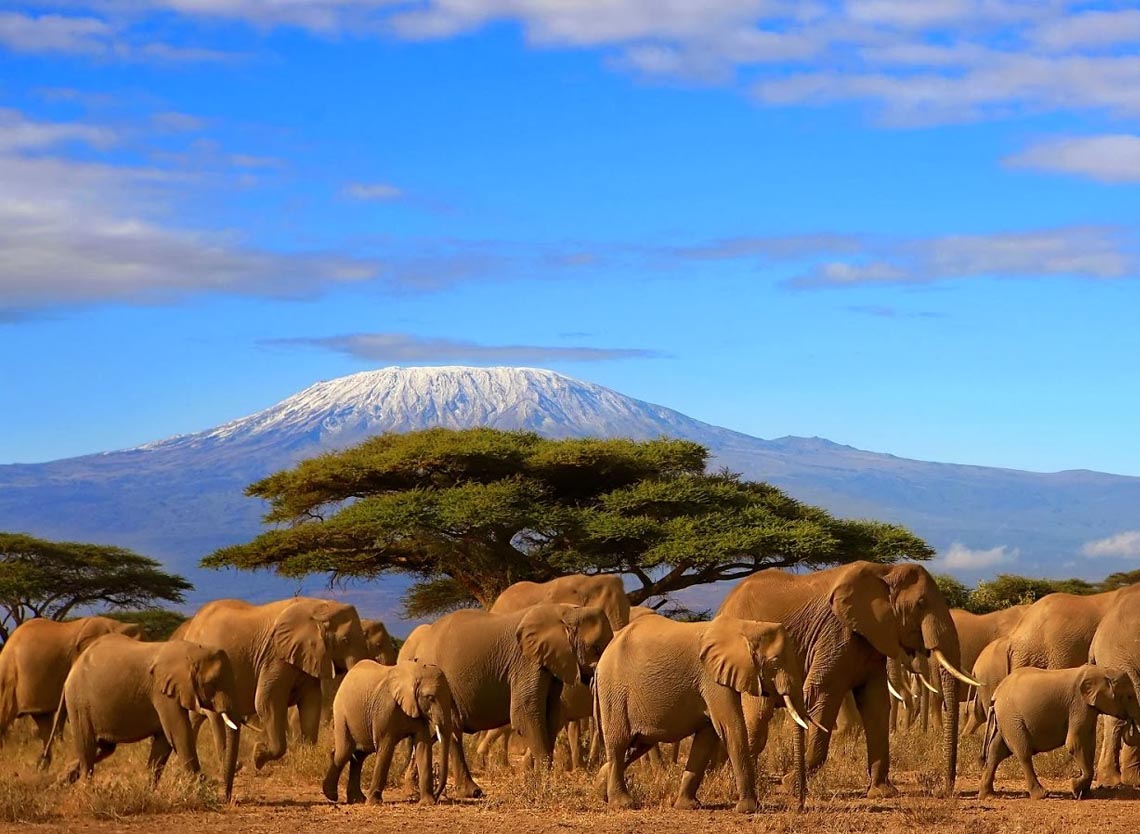A difficult to beat destination in Africa.
Tanzania is the largest country in East Africa, bordered by Kenya and Uganda to the north; Rwanda, Burundi, and the Democratic Republic of the Congo to the west, and Zambia, Malawi, and Mozambique to the south. This is one of the oldest known continuously inhabited areas on Earth; fossil remains of humans and pre-human hominids have been found dating back over two million years. Tanzania is believed to have been populated by hunter-gatherer communities, probably Cushitic and Khoisan speaking people. About 2000 years ago, it is believed that Bantu-speaking people began to arrive from western Africa in a series of migrations. Later, Nilotic pastoralists arrived, and continued to immigrate into the area through to the 18th century.

What Tanzania offers?
Tanzania is as exotic as it sounds, as romantic as legend makes it, as intriguing as its past and as colorful as it promises to be. Tanzania’s wildlife resources are considered among the finest in the world. Tanzania is the only country, which has allocated more than 25% of its total area for wildlife national parks and protected areas. There are 16 National Parks in Tanzania, 28 Game Reserves, 44 Game controlled areas, 1 conservation area and 2 Marine Parks.
Wonderful Wildlife: More than almost any other destination, Tanzania is the land of safaris. Wildebeest stampede across the plains. Hippos jostle for space in muddy waterways. Elephants wander along seasonal migration routes and chimpanzees swing through the treetops. Throughout the country there are unparalleled opportunities to experience this natural wealth.
Idyllic Beaches: Tanzania’s Indian Ocean coastline is magical, with tranquil islands and sleepy coastal villages steeped in centuries of Swahili culture – this East African coast was the seat of sultans and a linchpin in a far-flung trading network extending to Persia, India and beyond. Relax on powdery beaches backed by palm trees and massive baobabs; take in magnificent, pastel-hued sunrises; immerse yourself in languid coastal rhythms; and sit beneath the billowing sails of a wooden dhow, listening to the creaking of its rigging and the gentle slap of the sea against its prow.
Mt Kilimanjaro: Sending its shadow across Tanzania’s northern plains, Mt Kilimanjaro beckons visitors with its graceful, forested flanks and stately snow-capped summit. It is Africa’s highest peak and the world’s highest free-standing volcano. Climbers by the thousands venture here to challenge themselves on its muddy slopes, rocky trails and slippery scree. The rewards: the thrill of standing at the top of Africa; magnificent views of Kilimanjaro’s ice fields; and witnessing sunrise illuminating the plains far below.
Captivating Cultures: Wherever you go in Tanzania, opportunities abound for getting to know the country’s people and cultures. Meet red-cloaked Maasai warriors. Spend time with the semi-omadic Barabaig people near Mt Hanang. Experience the hospitality of a local meal and the rhythms of traditional dance. Chat and barter at local markets. More than anything else, it is the Tanzanian people that make visiting the country so memorable.
Tanzanian Culture: This leafy highland town is nestled in a fertile valley at about 1200m, surrounded by pines and eucalyptus mixed with banana plants and other tropical foliage. It’s the center of the western Usambaras and makes a convenient base for hikes into the surrounding hills. Lushoto is also the heartland of the Wasambaa people. Local culture is strong. In Muheza and parts of the Tanga region closer to the coast.
